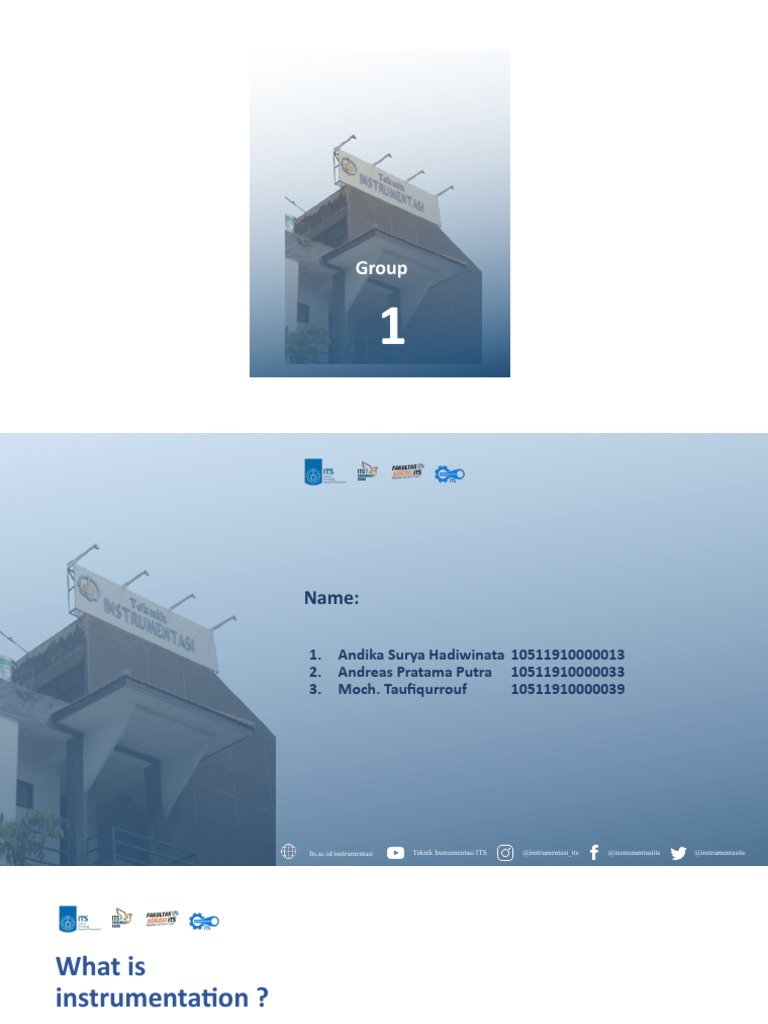Instrumentation occupies a pivotal place in the scientific enterprise, enabling us to quantify, perceive, and manipulate the physical world. But what lies beneath the surface of this term, and how does it truly affect our everyday lives? The inquiry is deceptively simple yet layered with complexity; to fully appreciate instrumentation, one must traverse its myriad dimensions ranging from fundamental concepts to contemporary applications.
At its core, instrumentation refers to the array of devices and tools utilized to measure, analyze, and control physical quantities. Broadly classified into three categories, these instruments can be classified as sensors, transducers, and data acquisition systems. Sensors detect physical phenomena, transducers convert these phenomena into electrical signals, and data acquisition systems transform these signals into meaningful information.
The insatiable curiosity about measurement invites us to ponder a critical question: What do we value more, the precision of our instruments or the veracity of the data they provide? The answer lies at the intersection of science and philosophy, demanding that one comprehends both the mechanisms of instrumentation and the theories underpinning scientific inquiry.
Historically, the evolution of instrumentation has paralleled scientific progress. In ancient times, rudimentary devices such as sundials and water clocks served as precursors to modern innovations. The invention of the microscope, for instance, unveiled a hidden microscopic world that expanded our understanding of biology and medicine. With the advent of the Industrial Revolution, a mélange of mechanical and electrical devices emerged, giving rise to sophisticated instrumentation that underpinned advances across diverse engineering fields.
However, as we stand at the precipice of the digital age, we are confronted with an array of contemporary challenges in instrumentation. The proliferation of technologies such as the Internet of Things (IoT) raises crucial questions about the interconnectivity and interoperability of devices. With the advent of smart sensors embedded into everyday products, we must consider: How do we ensure that the data collected is reliable and secure? This question compels us to reevaluate the architecture of our instrumentation frameworks.
Moreover, the measurement of intangible phenomena, such as emotional responses or psychological states, poses a unique challenge. Traditional instrumentation is often ill-equipped to capture such complexities, necessitating the development of innovative metrics and devices. This calls into question the nature of measurement itself: Is it the instrument that shapes our understanding, or is it our interpretative frameworks that dictate how we perceive the data it generates?
Instrumentation is not merely a collection of tools; it embodies a philosophy of empirical inquiry that demands both rigor and creativity. The interplay between qualitative and quantitative data necessitates a robust theoretical framework. For instance, the field of biomedical instrumentation exemplifies how interdisciplinary collaboration can lead to breakthroughs. By integrating principles from engineering, biology, and chemistry, instrument design has progressed, resulting in life-saving devices such as MRI machines and blood glucose monitors. Such advancements pose another question: how can we enhance the accessibility and affordability of these instruments in underserved communities?
As we dissect the anatomy of instrumentation, attention must shift to the role of calibration and validation. The reliability of an instrument is contingent upon its accurate performance under specified conditions. Calibration is a meticulous process that ensures an instrument produces results within a defined range of uncertainty. Validating the measurements involves comparing them against established standards to ensure their fidelity. Thus, the architecture of trust in scientific endeavors is constructed upon meticulous calibration and validation practices.
The realm of instrumentation also engages with the ethical dimensions of technology. As instruments become increasingly sophisticated, ethical challenges arise concerning data privacy, informed consent, and responsible usage. In an era where surveillance technologies have become ubiquitous, the responsibility of instrumentation engineers expands beyond engineering principles to include societal impact. This evolving framework urges professionals to conduct rigorous ethical analyses while developing instrumentation for real-world applications.
Furthermore, the role of machine learning and artificial intelligence in instrumentation cannot be overstated. These technologies are revolutionizing how data is processed and analyzed, enabling predictive analytics and real-time decision-making. However, this integration raises profound questions: Are we overly reliant on algorithms that may obfuscate underlying biases? How do we cultivate an instrumentation culture that emphasizes transparency and accountability in algorithmic decision-making?
In conclusion, instrumentation is far beyond a mere assemblage of measuring devices. It weaves through the fabric of scientific inquiry, industry innovation, ethical discourse, and technological advancement. As the landscape continues to evolve, the adventures that lie in exploring instrumentation present unique challenges accompanied by profound questions. The future of instrumentation demands not only technical excellence but also an unwavering commitment to ethical principles, interdisciplinary collaboration, and societal impact. In grappling with these complexities, we may yet uncover the tools necessary to navigate the uncertainties of an increasingly intricate world.










